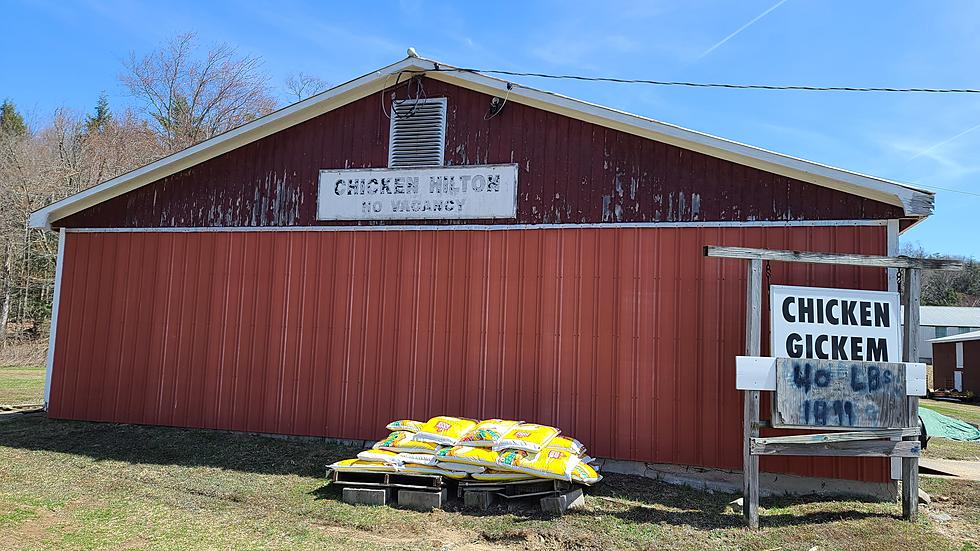
This Beautiful Moth-Like Insect Could Devastate Central New York
It looks like a pretty moth but don't let its beauty fool you. This is the spotted lanternfly (SLF), an invasive pest that could cause a devastating impact on our farm crops and agricultural production in CNY.
The New York State Departments of Environmental Conservation (DEC) has confirmed that spotted lanternfly, an invasive pest from Asia, has been found in Albany and Yates counties. A single adult insect was discovered in a vehicle in the Capital District. Also, a single adult insect was reported on a private Keuka Lake property in Penn Yan, Yates County.
The spotted lanternfly is potentially the worst insect pest to the [Northeast U.S.] since the gypsy moth [arrived] nearly 150 years ago says Rick Roush, dean of Penn State’s College of Agricultural Sciences in a State Impact article.
Extensive surveys throughout the area are underway. At this time, no additional insects have been found. You're asked to report potential sightings to spottedlanternfly@dec.ny.gov.
What is the spotted lanternfly (SLF)?
SLF is an invasive pest from Asia that primarily feeds on the tree of heaven (Ailanthus altissima) but can also feed on a wide variety of plants such as grapevine, hops, maple, walnut, fruit trees, and others. This insect could impact New York's forests as well as the agricultural and tourism industries.
Identification
Nymphs are black with white spots and turn red before transitioning into adults. They can be seen as early as April. Adults begin to appear in July and are approximately 1 inch long and ½ inch wide at rest, with eye-catching wings. Their forewings are grayish with black spots. The lower portions of their hindwings are red with black spots, and the upper portions are dark with a white stripe. In the fall, adults lay 1-inch-long egg masses on nearly anything from tree trunks and rocks to vehicles and firewood. They are smooth and brownish-gray with a shiny, waxy coating when first laid.
Where are they located?
SLF was first discovered in Pennsylvania in 2014 and have since been found in New Jersey, Delaware, and Virginia. In New York, a dead insect was found in Delaware County in the fall of 2017. As of spring 2018, New York has no infestations, though it's possible they are present in low numbers and have not been detected yet. Given the proximity of the Pennsylvania infestation, it is expected to be found in New York eventually.
Image Credit: Pennsylvania Department of Agriculture
What is the risk to NYS?
SLF threaten New York's agricultural and forest health. They feed on the sap of more than 70 plant species, excrete large amounts of sticky "honeydew," which then attracts swarms of insects, sooty molds that negatively affect the growth and fruit yield of plants.
How do they spread to new areas?
SLF can jump and fly short distances, and they spread primarily through human activity. They often hitch rides to new areas when they lay their eggs on vehicles, firewood, outdoor furniture, stone, etc. and are inadvertently transported to new areas.
What are the signs of an infestation?
- Sap oozing or weeping from tiny open wounds on tree trunks, which appears wet and may give off fermented odors.
- One-inch-long egg masses that are brownish-gray, waxy and mud-like when new.
- Old egg masses are brown and scaly.
- Massive honeydew build-up under plants, sometimes with black sooty mold.
What is being done?
If you believe you've found spotted lanternfly in New York, the DEC is asking that you take pictures of the insect, egg masses and/or infestation signs. Include something for scale such as a coin or ruler and email to spottedlanternfly@dec.ny.gov.
Note the location (address, intersecting roads, landmarks or GPS coordinates.)
Report the infestation to iMapInvasives.
[DEC]
More From 96.1 The Eagle









